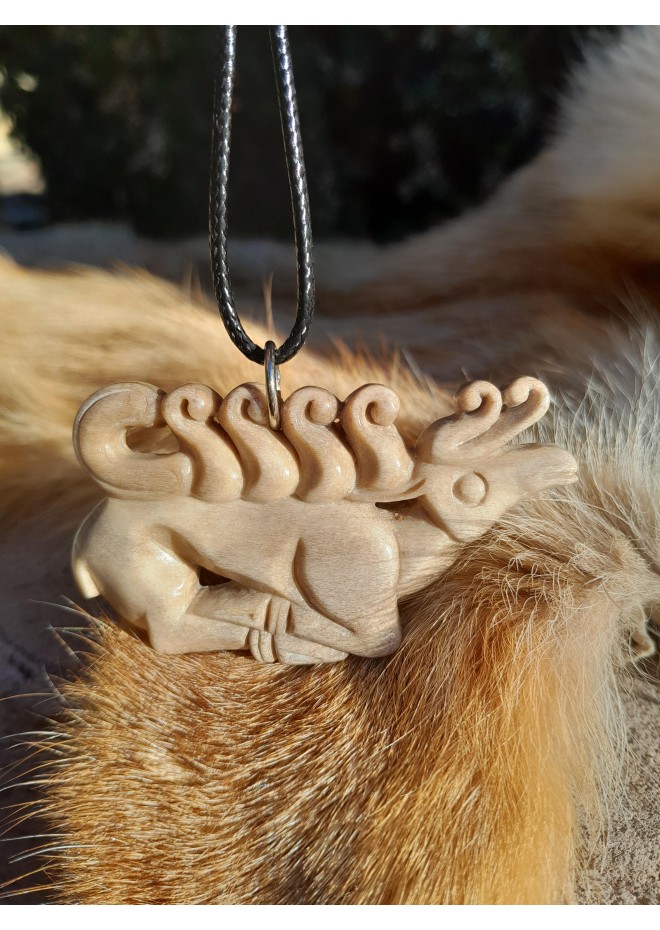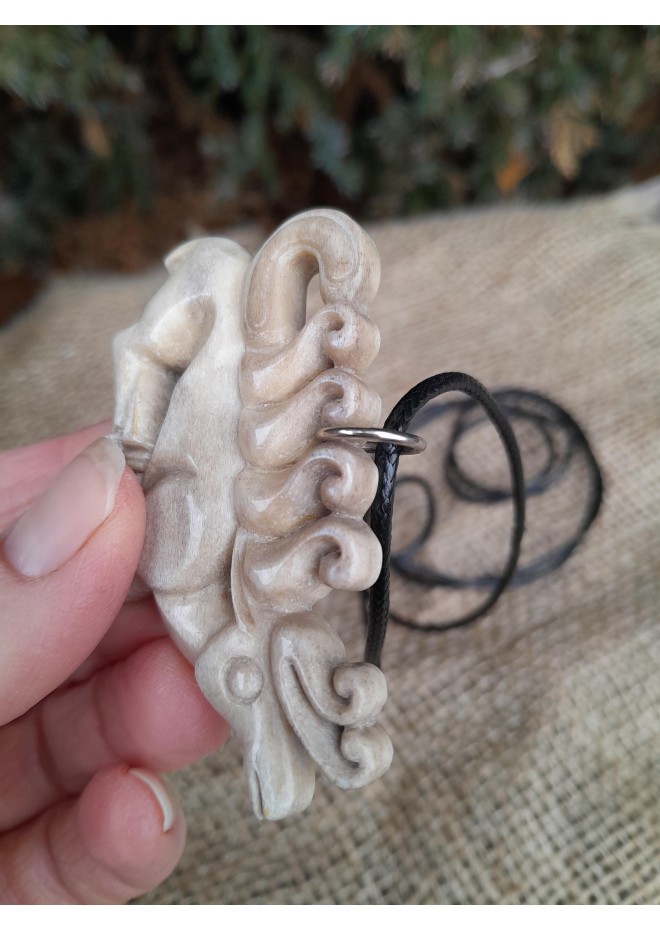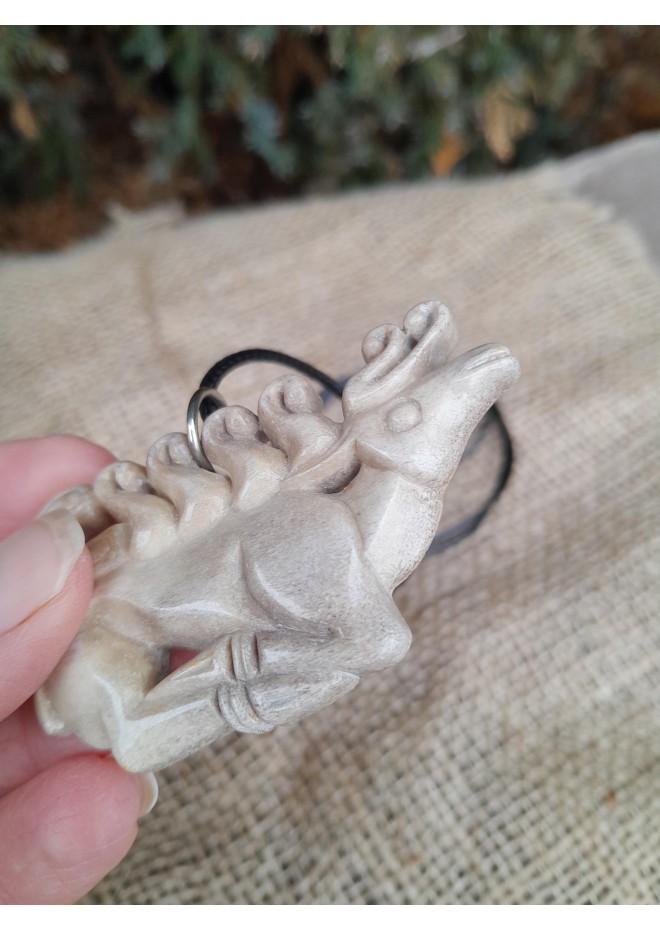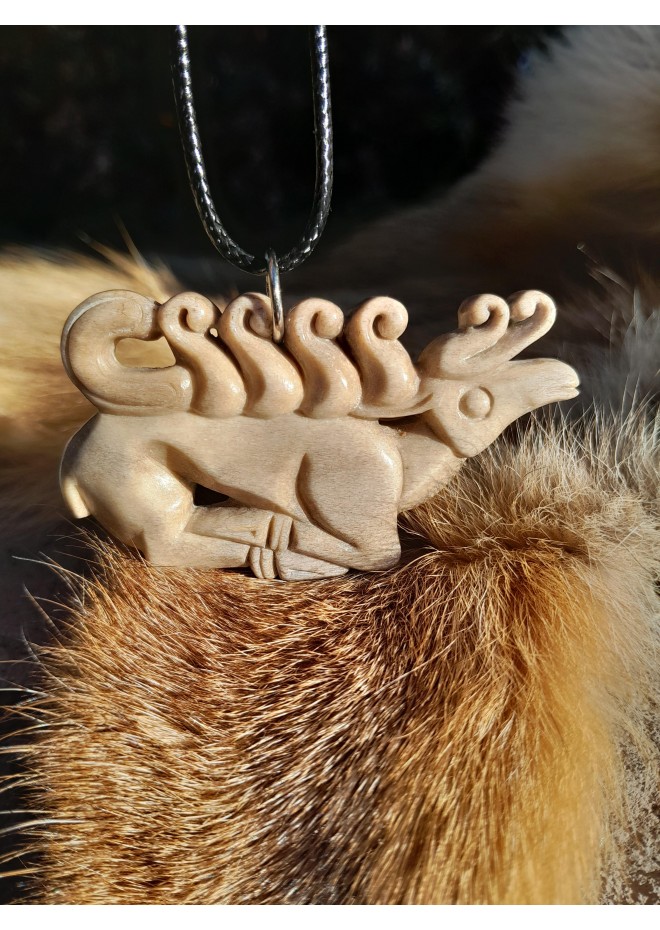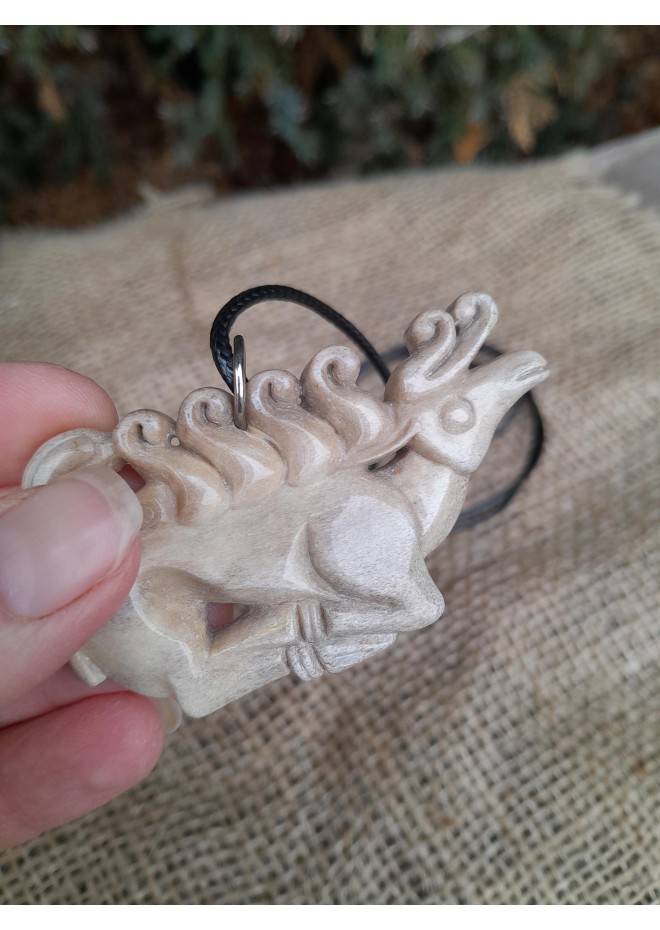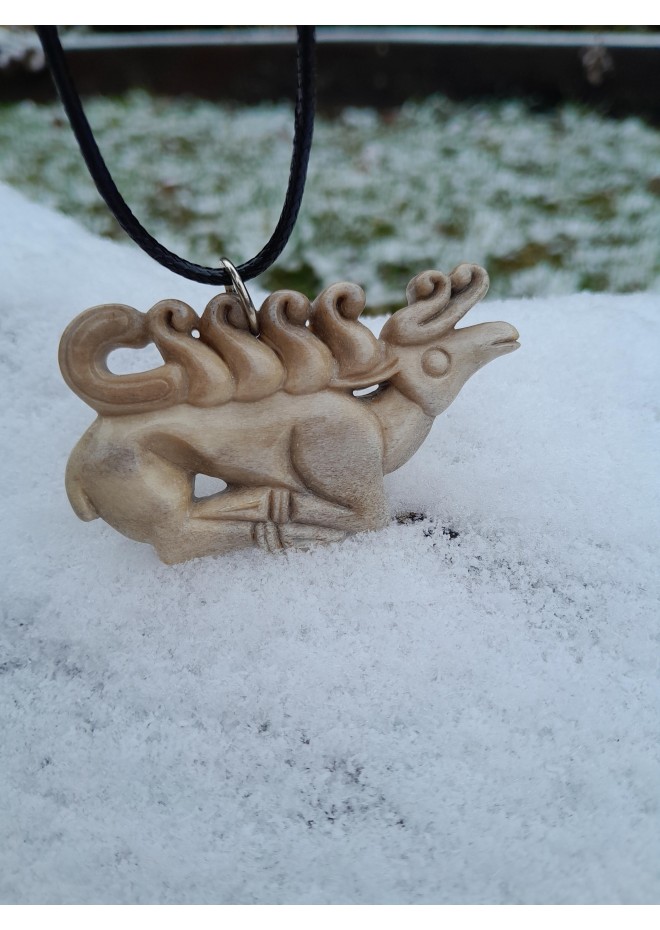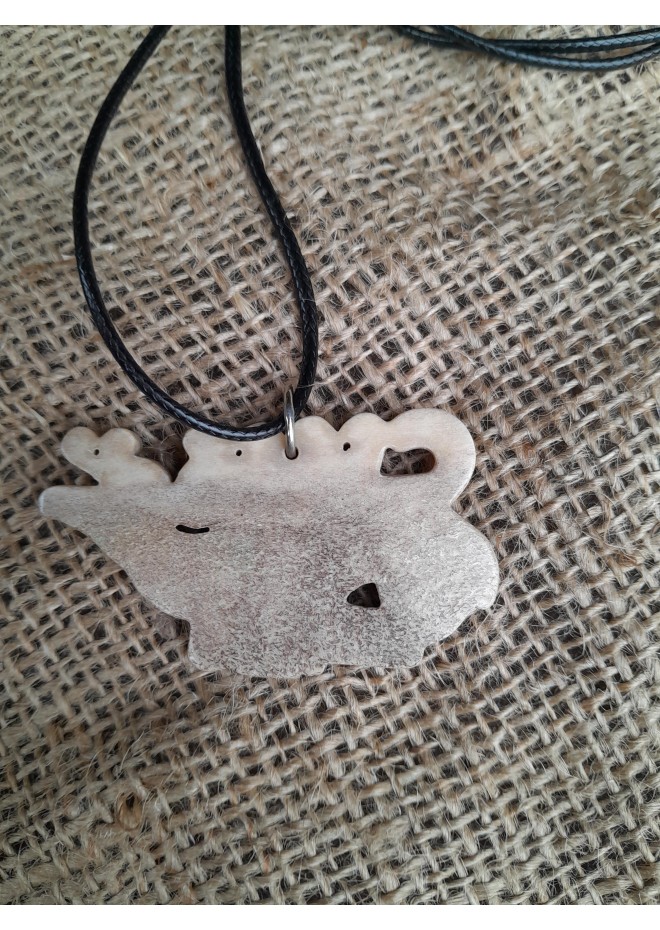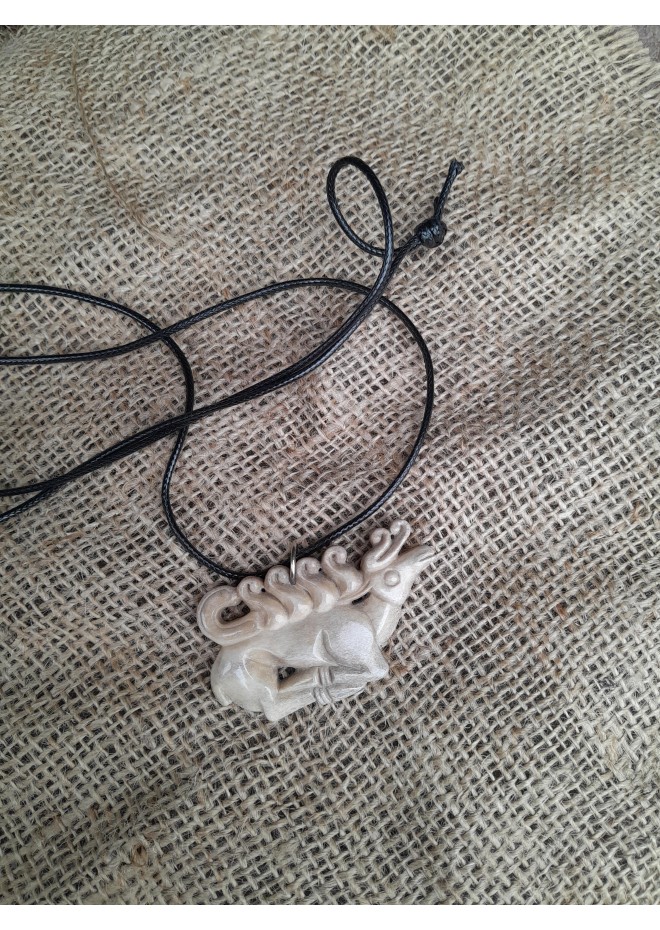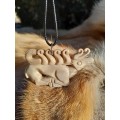Scythian Stag necklace
$152.00
Scythian stag. Scythian deer amulet.
Reproduction of a Scythian plaque.
A high quality. Unique detailed carving.
The unique pendant in the form of a Scythian deer is hand-carved of moose antlers, which gives it a special charm and natural look. Every detail impresses with its naturalness and refined work. This decoration will become not only a wonderful accent for your image, but also a unique item that will emphasize your style and impress with its natural beauty.
Place your order now and add something special to your collection.
Moose antlers hand carved.
No animals were injured. In November - December, the moose sheds its old horns. In April - May, the animals begin to grow new horns.
We find them in the forest, process and make unique things for you.
PLEASE NOTE, if you like any product in our store and you would like to order it, but you do not like some details (you would like to change the rune or other symbol), please contact me, we will make the product according to your wishes.
Size: is about 3.7 cm (1,46 inches).
width is about 6.5 cm (2,56 inches).
The ring is made of cupronickel
This amulet is inspired by the Scythian animal style.
Scythians, a members of a nomadic people. The Scythians founded a rich, powerful empire.
The Scythians were feared and admired for their prowess in war.
But the Scythians were remarkable not only for their fighting ability but also for the complex culture they produced.
Scythian Art is best known for its 'animal art.
Combat scenes between two or more animals are numerous, as are single animal figures. Many real or mythical beasts are represented, the majority of the types having roots in deep antiquity, but the Scythians fashioned them in a manner that was new and characteristically their own.
Reflecting their nomadic lifestyle, most Scythian decor was manufactured in plaque or applique style.
The Scythians' Caucasian features described by 1st-century CE Chinese chroniclers and their Indo-European language support earlier Bronze Age origins in the West, likely from the Celts. Celtic influences indeed appear echoed in Scythian art.
Many of the most impressive pieces of Scythian art were recovered in the 17th–19th century. Later excavations of a number of kurgans throughout Central Asia and elsewhere have uncovered thousands of gold objects (often in a single kurgan), as well as bronze, iron, silver, and electrum artifacts. Those objects demonstrate Scythian knowledge and mastery of metal casting, plastic shaping, joining, decorative, and finishing techniques.
Furthermore, the Scythians did not limit themselves to metalwork; other unearthed materials include wood, leather, bone, beads of carnelian.
Due to their strength and durability since ancient times, the horns/antlers of animals were used in the manufacture of weapons and jewelry.
Reproduction of a Scythian plaque.
A high quality. Unique detailed carving.
The unique pendant in the form of a Scythian deer is hand-carved of moose antlers, which gives it a special charm and natural look. Every detail impresses with its naturalness and refined work. This decoration will become not only a wonderful accent for your image, but also a unique item that will emphasize your style and impress with its natural beauty.
Place your order now and add something special to your collection.
Moose antlers hand carved.
No animals were injured. In November - December, the moose sheds its old horns. In April - May, the animals begin to grow new horns.
We find them in the forest, process and make unique things for you.
PLEASE NOTE, if you like any product in our store and you would like to order it, but you do not like some details (you would like to change the rune or other symbol), please contact me, we will make the product according to your wishes.
Size: is about 3.7 cm (1,46 inches).
width is about 6.5 cm (2,56 inches).
The ring is made of cupronickel
This amulet is inspired by the Scythian animal style.
Scythians, a members of a nomadic people. The Scythians founded a rich, powerful empire.
The Scythians were feared and admired for their prowess in war.
But the Scythians were remarkable not only for their fighting ability but also for the complex culture they produced.
Scythian Art is best known for its 'animal art.
Combat scenes between two or more animals are numerous, as are single animal figures. Many real or mythical beasts are represented, the majority of the types having roots in deep antiquity, but the Scythians fashioned them in a manner that was new and characteristically their own.
Reflecting their nomadic lifestyle, most Scythian decor was manufactured in plaque or applique style.
The Scythians' Caucasian features described by 1st-century CE Chinese chroniclers and their Indo-European language support earlier Bronze Age origins in the West, likely from the Celts. Celtic influences indeed appear echoed in Scythian art.
Many of the most impressive pieces of Scythian art were recovered in the 17th–19th century. Later excavations of a number of kurgans throughout Central Asia and elsewhere have uncovered thousands of gold objects (often in a single kurgan), as well as bronze, iron, silver, and electrum artifacts. Those objects demonstrate Scythian knowledge and mastery of metal casting, plastic shaping, joining, decorative, and finishing techniques.
Furthermore, the Scythians did not limit themselves to metalwork; other unearthed materials include wood, leather, bone, beads of carnelian.
Due to their strength and durability since ancient times, the horns/antlers of animals were used in the manufacture of weapons and jewelry.
Recently Viewed








